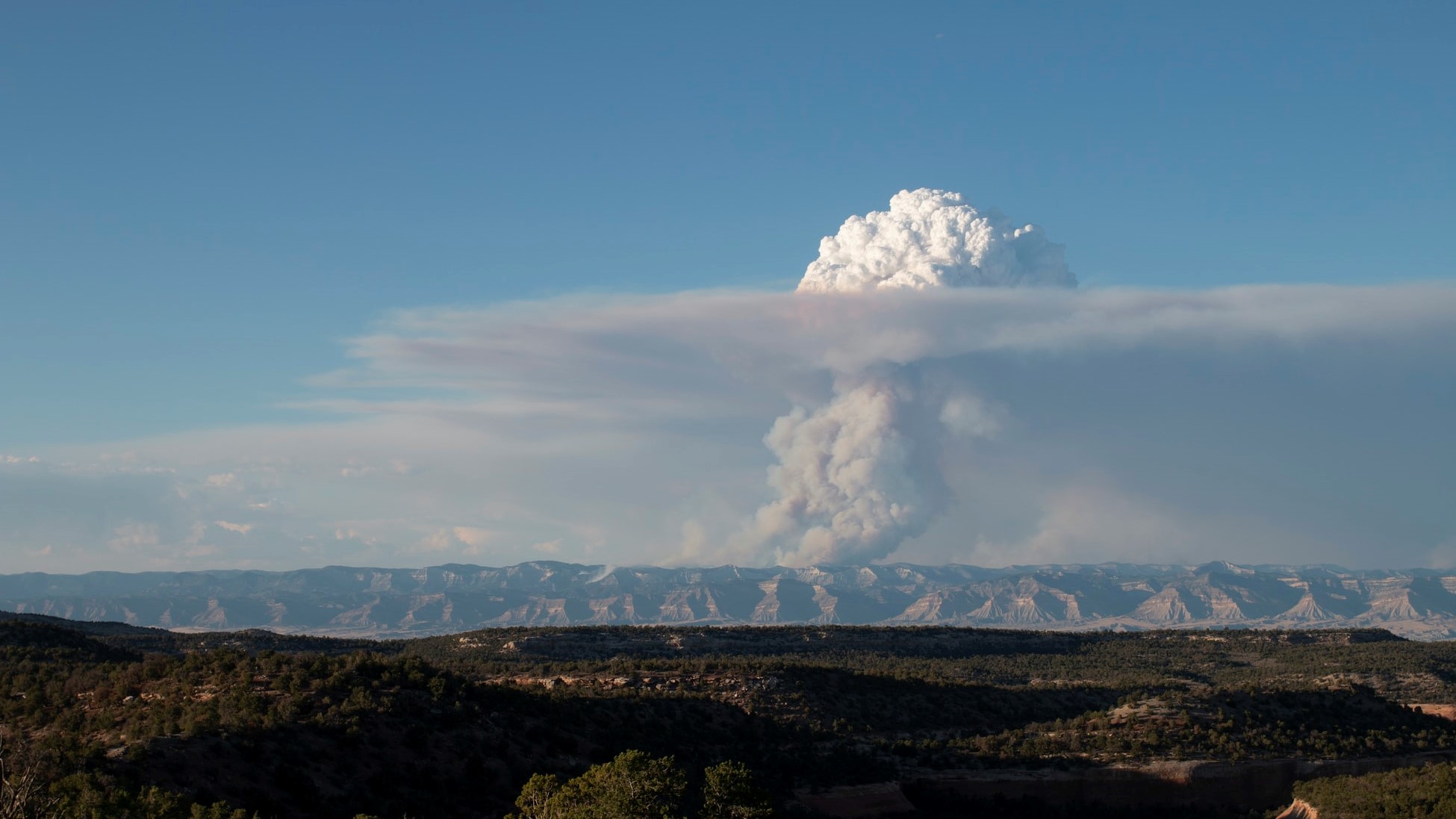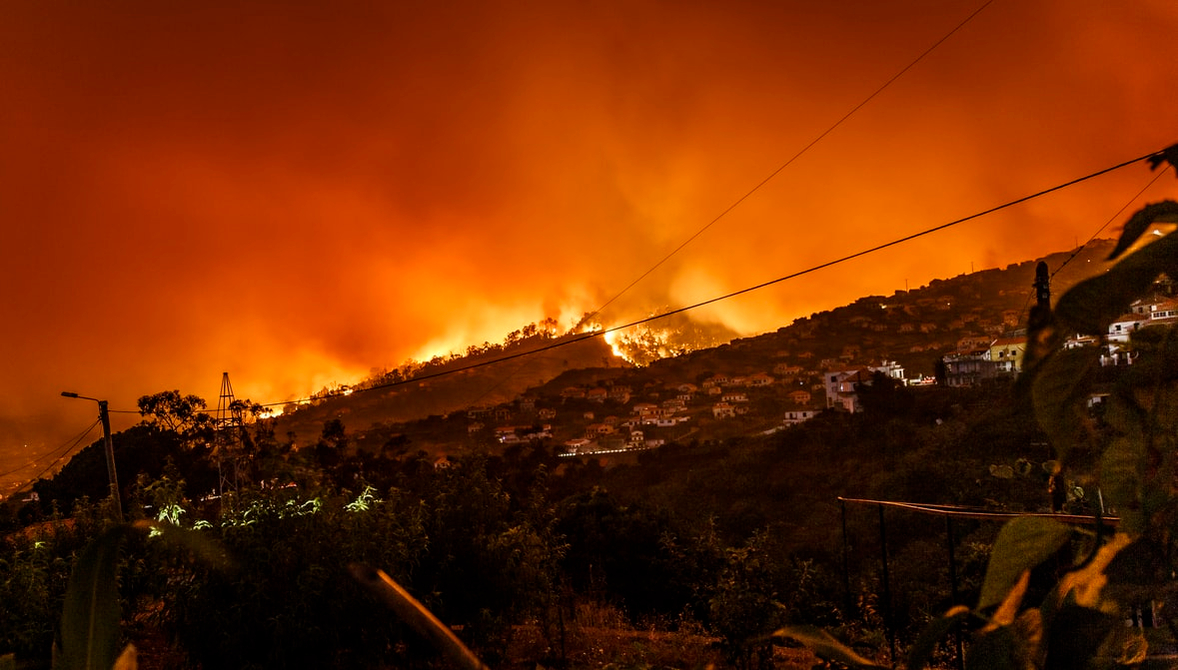Newsletter
As we move into the ‘20s, we’re looking forward to a new decade and all of the change it will bring. However, our old issues don’t stop at the door. Environmental problems like climate change and air pollution are still monumental issues that need solving.

For us at Kaiterra, tackling air pollution is our prime goal. Our mission has always been to rid the world of air pollution, once and for all. In the spirit of this mission, and in light of the continuing air pollution crisis, we’d like to discuss one key component of air pollution: particulate matter.
On the outset, particulate matter seems easier to understand than other air pollutants. It’s just dust and other particles floating in the air, right? We don’t even need to dust off our high school chemistry books to understand this one! However, particulate matter is far more nuanced than it seems, with complex environmental and health impacts that we all need to be aware of.
So, what exactly is particulate matter? Where does particulate matter come from? And, importantly, how do we protect ourselves from particulate matter? We’re going to discuss these questions, and more, in this article.
A Guide to Understanding Particulate Matter (PM)
1. What is particulate matter (PM)?
2. How does particulate matter impact your health?
3. Where does particulate matter come from?
4. How to protect yourself from particulate matter
What Is Particulate Matter (PM)?
One of six criteria air pollutants, as defined by the EPA, particulate matter is a mixture of solid and liquid particles suspended in the air.
Most particulate matter (abbreviated ‘PM’) is microscopic and inhalable. Some examples are:
- Mold spores
- Dust
- Smoke
- Pollen
- Soot
- Dirt
Particulate matter can include organic matter, like dander and spores, and inorganic matter, like dust. While other pollutants are identified through chemical makeup, PM is an umbrella term for all airborne particles, regardless of molecular composition. Scientists and researchers use size to categorize PM, as different sizes of particulate matter prompt different physiological reactions.
What’s the difference between PM10 and PM2.5?
When discussing particulate matter, the two subcategories you’ve likely heard of before are PM10 and PM2.5. You may be wondering: what exactly is the difference between PM2.5 and PM10? Are they completely different pollutants?
To answer these questions, the main difference between PM2.5 and PM10 is size. When discussing particulate matter, the number to the right of the ‘PM’ indicates the aerodynamic diameter of the particles. So, PM10 refers to particles with an aerodynamic diameter smaller than 10 μm, and PM2.5 refers to particles with an aerodynamic diameter smaller than 2.5 μm. You may also hear PM10 called coarse dust and PM2.5 called fine dust. Here’s a handy size chart for your reference!
.png?width=1700&name=Particulate%20Matter%20Sizes%20(2).png)
PM10 and PM2.5 are both forms of particulate matter, but the difference in aerodynamic diameters comes into play when discussing the health effects of particle pollution exposure.
How Does Particulate Matter Impact Your Health?
Particulate matter is a significant health concern (it’s an air pollutant, after all!). To discuss the full wellness implications of particulate matter, we need to split up PM10 and PM2.5.
PM10 health effects
Despite being larger of the two PM categories, PM10 is still quite small (less than one-tenth the width of a human hair!). As you inhale these particles, PM10 can irritate your nose and throat tissue, triggering allergic reactions. Once these particles get into your lungs, PM10 further irritates the lung tissue and can prompt asthma attacks. Additional conditions include:
- Stroke, high blood pressure, and heart attack
- Increased risk of lung cancer
- Reduced lung development
- Bronchitis
- Premature death
PM2.5 health effects
PM2.5 poses an even greater danger to your health. One of the reasons scientists study PM2.5 separately from PM10 (even though PM2.5 is technically counted as PM10) is because of a special property of PM2.5. Unlike PM10, PM2.5 can not only enter your lungs but also permeate your bloodstream. PM10 particles get stuck higher up in your respiratory track and can't penetrate deep into your body, as PM2.5 does. PM2.5 can flow to other parts of your body like your brain and heart.
As PM2.5 enters different organs in your body, it causes inflammation and damage. For this reason, PM2.5 contributes to the same conditions as PM10 and additional ones like:
- Respiratory disease
- Reduced immune response
- Congenital disabilities
- Diabetes
- Reduced brain white matter
PM0.1 (Ultrafine dust)
PM0.1 is much less frequently talked about, as there is little available data. PM0.1, or ultrafine dust, is believed to have even more significant health impacts than PM2.5 and PM10. However, scientists still aren’t clear about the health implications of these particles, as accurately measuring these particles is challenging, and the long-term health implications created by these particles require likewise long-term (potentially decades-long) studies.
With all this discussion of serious health effects, it can be easy to fall into defeatist thinking. After all, how can you avoid toxins in the very air you breathe? Luckily, there are some tips and tech that will help you reduce your exposure to particulate matter and make smarter, healthier choices. First, we need to talk about the sources of particulate matter so you can more effectively avoid this air pollutant.
Where Does Particulate Matter Come From?
When we think of air pollution, we usually think of industrial sources like factories and power plants. While these are sources of particulate matter, there are many more places where particulate matter can form. In general, particulate matter is created from primary or secondary sources.
Primary sources of particulate matter
As the name implies, primary sources of particulate matter directly emit PM into the air. Some examples of these sources are:
- Construction sites
- Mining activities
- Paving
- Unpaved road dust
- Natural dust
- Vehicle emissions
- Wildfires
- Slash-and-burn agricultural
- Other fuel-burning activities

Smoke from wildfires contains a lot of particulate matter (mostly PM2.5)
While these are all examples of outdoor PM pollution, oftentimes particulate matter levels can be higher inside our homes. Wood-burning and coal-burning stoves are both heavy emitters of PM2.5, and without sufficient ventilation, these particles get trapped in our homes. Pet dander and mold spores are both forms of particulate matter, and both come from inside our homes.
Secondary sources of particulate matter
Much like ozone, particulate matter can also be created by other pollutants in the atmosphere. Chemical reactions of gases like ammonia, volatile organic compounds, sulfur oxides, and nitrogen oxides can produce airborne particulates. Much of the PM2.5 pollution we experience is created by secondary sources, which makes reducing all forms of air pollution of paramount concern.
How To Protect Yourself From Particulate Matter
Now that we know where particulate matter comes from, let’s explore some practical ways to protect ourselves.
Take a look at your local AQI readings
One of the best ways to protect yourself and your family from air pollution is to check your local air quality readings. Many cities and counties have their own air quality monitoring stations, providing free, online data for you to make informed decisions about your day. Particulate matter is one of the key pollutants monitored by organizations like the EPA, and PM readings from these monitoring stations are factored into an overall air quality index (AQI).
When pollution levels are high, you should keep your doors and windows closed and avoid going outside. Children, the elderly, and people with respiratory conditions are especially susceptible to particulate matter and should avoid going out even when pollution is less severe (AQI 101-150).
Skip your morning jog
Exercise is a great way to get in shape and stay healthy, but exercising on polluted days can do more harm than good. During exercise, our breathing rate increases, and we take deeper breaths, creating an opportunity for pollution to penetrate further into our lungs. The longer we’re out there working up a sweat, the more damage particulate matter can do to our health.

On polluted days, we recommend working out indoors with an air purifier or reducing the intensity of your workout and wearing a mask. Checking your AQI readings before exercising outdoors is crucial, and you definitely shouldn’t exercise outdoors, even with a mask, when pollution levels are hazardous (>300).
Wear a pollution mask
If you do have to go out on a polluted day, be sure to wear a pollution mask. Fitted over the face like a doctor’s mask, pollution masks help filter out most of the particulate matter from the air you’re breathing.
Pollution masks aren’t 100% effective, as the seal against your face isn’t airtight. Still, pollution masks will significantly cut the amount of particle pollution you’re inhaling and minimize the damage caused by particulate matter.
Eat nutritiously
Eating an apple a day won’t keep the pollution away, but eating specific nutrients will disrupt oxidative stress on the body caused by PM2.5 inhalation. Antioxidant supplements and antioxidant-rich foods like berries, nuts, green veggies, and fish oils are our go-to superfoods for preventing oxidative stress and reducing the impact of particulate matter on our bodies.

Believe it or not, simple changes to your diet helps protect you from particulate matter.
A word of caution, however; eating berries and fish oil supplements aren’t going to reverse all medical effects of particulate matter. We need to be sure to combine this dietary change with preventative measures like air purifiers and pollution masks to fully protect ourselves.
Pick up an air purifier
Even if you avoid outdoor particle pollution, some particulate matter will inevitably seep into your home. In this case, an air purifier will do the trick.
By filtering particles out of your air, air purifiers reduce the amount of particulate matter your breathing while indoors. For some tips to make sure your purifier is running effectively, check out our article!
Invest in an air quality monitor
For personalized air quality data, an air quality monitor is a great option. Even within one city, air quality can vary greatly, so having a personal air quality monitor can provide the most relevant data about the air quality status in and around your home.
Air quality monitors can also go beyond particulate matter, measuring TVOC, CO₂, humidity, and more. Read our article on what to look for in an air quality monitor for help picking a top-notch air quality monitor.
Particulate Matter Key Takeaways
Particulate matter is a major air pollutant that poses significant health threats. Luckily, you can protect yourself with these crucial tips and tech!
- Checking out your AQI readings
- Avoiding outdoor exercise on polluted days
- Putting on a pollution mask
- Eating foods rich in antioxidants
- Purchasing an air purifier
- Using an air quality monitor






.png?width=200&height=148&name=Menu%20C%20(2).png)

.png?width=307&height=228&name=Menu%20-%20D%20(1).png)
.png)




